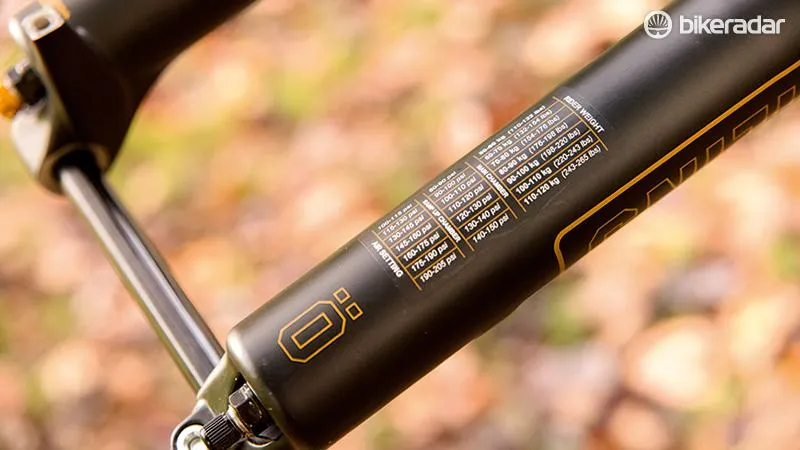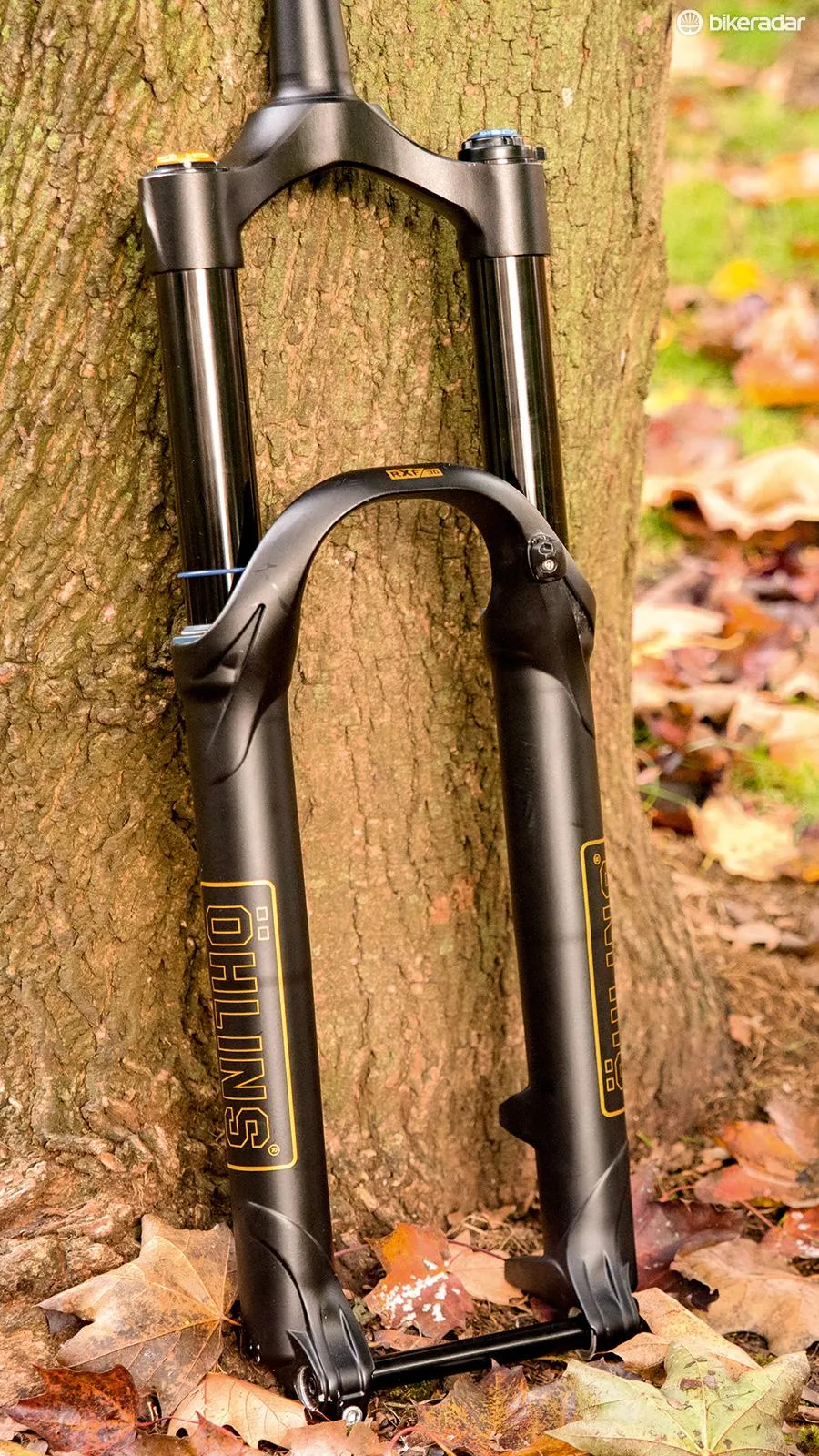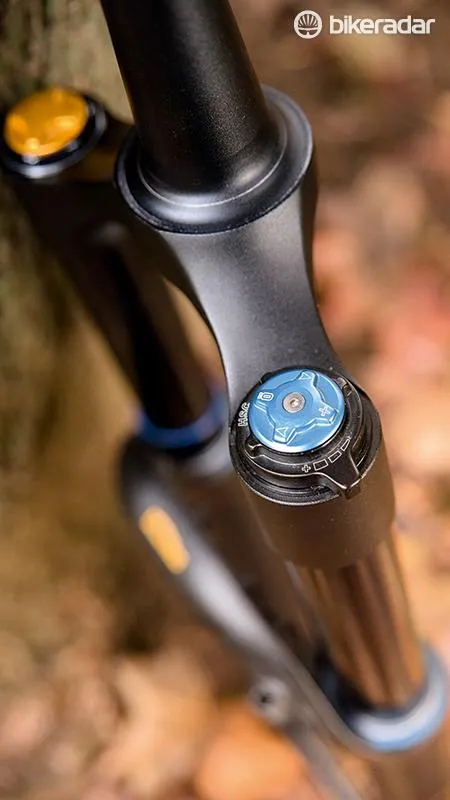The RXF 36 is the second mountain bike fork from motorsport legends Öhlins. Like its little brother, the RXF 34, it uses a one-piece crown and steerer that doubles as a crown race.
- How to set up the suspension on your mountain bike
- 6 top suspension maintenance tips
- Öhlins RXF 34 fork review
This design is claimed to boost stiffness and reduce weight, but requires a specific lower headset bearing if you don’t have a Specialized bike. The 51mm offset is pretty much standard for a 29er fork, though we’ve found some big-wheelers handle better with the 46mm offset found on the RXF 34.
Whether we were stabbing at the brakes or smashing into rocks, the Öhlins felt noticeably stiffer than the Fox
A ‘ramp-up chamber’ within the air spring lets you control the end-stroke progression without using volume spacers. Öhlins’ recommended pressures for our 85kg tester (115psi in the main spring, 160psi in the ramp-up chamber) gave 15 percent sag — about right for harder riders — but left us bottoming the fork out far too easily.
We incrementally increased the ramp-up pressure to 225psi, where the bottom-out force was spot-on. Once we had the settings dialled, we did some back-to-back testing against a class benchmark, the Fox 36 Float RC2.
Whether we were stabbing at the brakes or smashing into rocks, the Öhlins felt noticeably stiffer than the Fox. Over kerb-sized bumps it glided through its travel, with less distracting backwards flex. At 2,057g with a 210mm steerer, it’s only around 20g heavier too, so that unusual crown-steerer design seems to work.

On chattery ground, though, the RXF 36 felt far less planted than the 36 Float — less sensitive at the beginning of its stroke and delivering less traction over pitter-patter bumps despite its impressively low friction. We wondered if this was because the chassis was just too stiff, but then realised that the firm beginning and relatively unsupportive mid-stroke (compared to the Fox) were symptomatic of a small negative spring.
Taking both forks apart backed this theory up. We reduced the main chamber pressure to 107psi to compensate, but this resulted in too little mid-stroke support. This left us relying more on the damping to prop up the fork. Thankfully, Öhlins’ twin-tube damper is seriously impressive. Running the low-speed compression damping 14 clicks from closed and the high-speed three from closed added a good deal of support when hitting G-outs or turns, without feeling too harsh on bigger hits. Even so, the spring curve meant the RXF 36 couldn’t match the 36 Float’s balance of traction and support, so the Fox fork remains our favourite for now.



